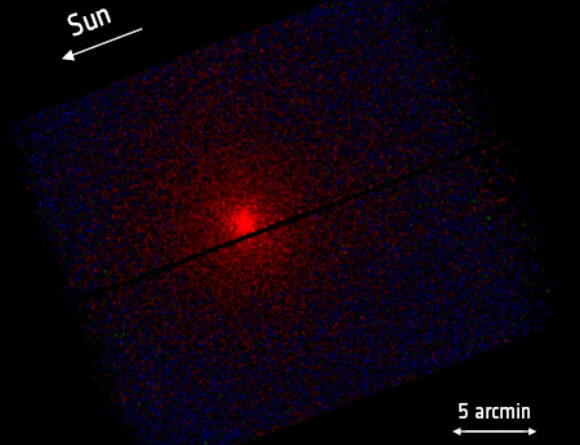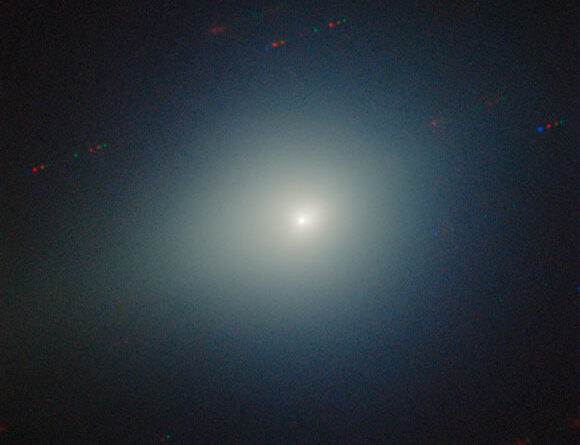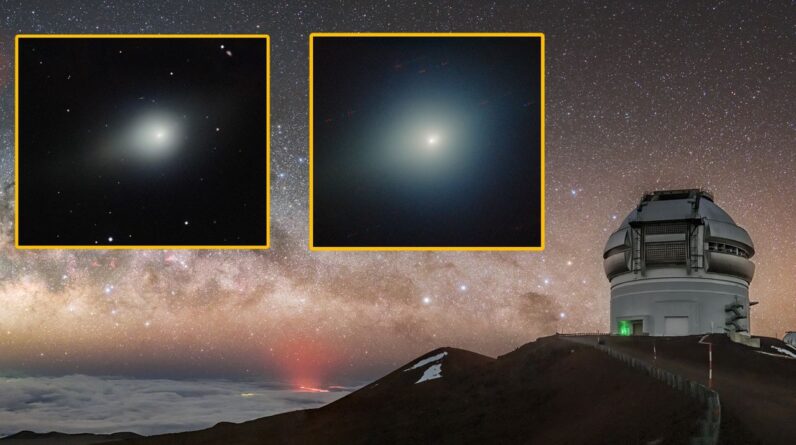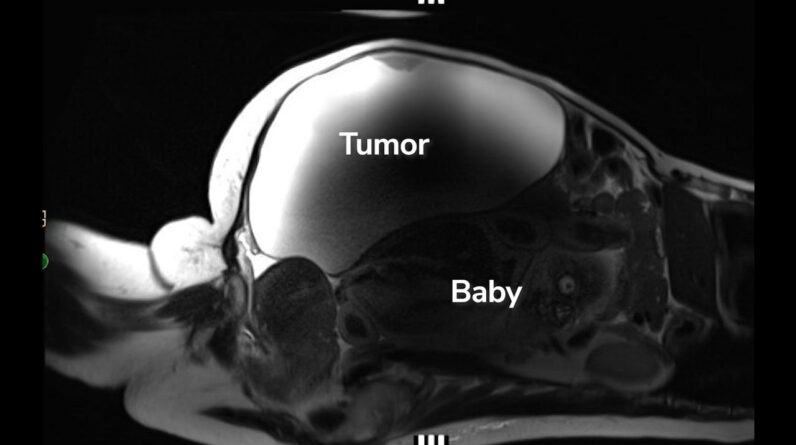
Astronomers have watched a massive star vanish in the night sky, only to be replaced by a black hole.
The supergiant star M31-2014-DS1, which has a mass 20 times greater than the sun and is located 2.5 million light-years away in the neighboring Andromeda galaxy, brightened in 2014 before dimming from 2016 until 2023, when it finally became undetectable to telescopes.
Typically, when stars of this type collapse, the event is accompanied by bursts of light brought on by stellar explosions known as supernovae.
But in this case no such optical outburst was spotted, leading astronomers to think it is one of the first ever examples of a type of stellar collapse known as a “failed supernova.” They published their findings Oct. 18 on the preprint website arXiv, so the research has not yet been peer-reviewed.
“The dramatic and sustained fading of M31-2014-DS1 is exceptional in the landscape of variability in massive, evolved stars,” the authors wrote in the study. “Lacking any evidence for a luminous outburst at such proximity, the observations of M31-2014-DS1 bespeak signatures of a ‘failed’ SN [supernova] that leads to the collapse of the stellar core.”
Stars burn via nuclear fusion, transforming hydrogen into helium and releasing energy from their fiery hearts. When their hydrogen fuel supply runs low, the blazing giants fuse heavier elements until their cores are jammed up with unreactive iron. This causes the fusion process to falter and the outward force it produces to decrease, causing the stars to rapidly collapse inwards.
Related: James Webb telescope sees ‘birth’ of 3 of the universe’s earliest galaxies in world-1st observations
For stars that are eight times or more the mass of our sun, the outer layers rebound off the iron core, leading to a gigantic explosion called a supernova and leaving behind a black hole or a stellar husk known as a neutron star.
But not all collapsing massive stars produce supernovae. In recent years, astronomers have spotted tantalizing clues that some massive stars turn into black holes before they can eject material outward — in an event they call a failed supernova. Yet spotting a disappearing pinprick in a crowded field of light is far from easy, meaning direct observations of the phenomenon have been very rare.
To search for failed supernovae, the astronomers behind the new study scoured data taken by the Near-Earth Object Wide-Field Infrared Survey Explorer (NEOWISE), a space telescope that scanned the distant universe for galaxies and black holes, as well as studying our own cosmic neighborhood for asteroids and comets, before it burned up in Earth’s atmosphere on Nov. 1, 2024.
After spotting M31-2014-DS1, the astronomers saw it dim from 2016 to 2019, with follow-up observations in 2023 showing that it had disappeared completely from sight.
With no sign of a supernova throughout this period, the researchers concluded that roughly 98% of the star’s mass collapsed, leaving behind a black hole with about 6.5 solar masses.
The astronomers compared M31-2014-DS1’s death with the only other strong candidate for a failed supernova, N6946-BH1, found 22 million light-years away in the galaxy NGC 6946, or the “Fireworks Galaxy.”
Follow-up observations will be needed to spot X-ray emissions from these black hole candidates and confirm their birth by failed supernovae, the researchers noted, which they plan to perform in the near future.
As an Amazon Associate I earn from qualifying purchases.







